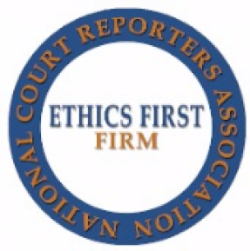Captivate the Jury: Vital Elements of a Powerful Trial Presentation
In the realm of lawful campaigning for, the capability to astound a court is paramount to the outcome of a test (trial presentation). Vital aspects such as recognizing the target market, crafting a compelling story, and grasping verbal and non-verbal communication are vital elements of an effective discussion. Additionally, the calculated use aesthetic help can dramatically improve comprehension and retention of vital disagreements. As these factors link, they develop a natural technique that not only educates however also engages jurors on multiple levels. What specific strategies can really change a common presentation right into a memorable experience for the court?

Comprehending Your Target Market
Comprehending your audience is a critical element of efficient trial presentation. A successful presentation rests on the capacity to realize the demographics, values, and proneness of jurors. This comprehension informs exactly how disagreements are mounted, proof is provided, and sob stories are crafted, making certain that the message resonates with the jurors on a personal level.
Research study indicates that jurors come from diverse backgrounds and may have differing levels of understanding relating to legal proceedings. Additionally, understanding the jurors' possible biases and life experiences allows the test presenter to anticipate arguments and address concerns proactively.
Reliable trial discussion also entails observing jurors' responses during the procedures. Engaging with jurors as people rather than a cumulative unit is essential in cultivating a strong link in the court room.

Crafting a Compelling Narrative
Crafting a compelling narrative is important in guiding jurors with the complexities of an instance. A well-structured narrative not just streamlines detailed legal principles but likewise involves jurors on a psychological level, making the details extra relatable and remarkable.
To attain this, attorneys should begin by identifying the core message they wish to convey. This message should reverberate with the jurors' worths and experiences, cultivating a link that transcends plain truths. The story must unfold logically, providing occasions in a clear series to prevent confusion. This chronological strategy can help jurors adhere to the progression of events, emphasizing domino effect.
Incorporating human elements-- such as individual stories or anecdotes-- can additionally boost the narrative's effect. These components evoke empathy, enabling jurors to picture the effects of the situation on genuine lives. Furthermore, employing a consistent theme throughout the presentation strengthens the primary argument, making it simpler for jurors to maintain crucial points.
Inevitably, a compelling narrative transforms a trial presentation from a simple recounting of truths into a convincing story that astounds the court, urging them to deliberate with both factor and emotion.
Using Visual Aids
Incorporating aesthetic help right into a trial discussion can substantially enhance jurors' comprehension and retention of details. Visual products such as graphes, diagrams, photographs, and videos can change complicated legal ideas and proof into conveniently absorbable formats. By involving several detects, these aids enable jurors to picture the case's crucial elements, making it less complicated for them to follow along and realize complex details.
Additionally, properly designed visual help can emphasize crucial points and highlight partnerships in between different items of proof. Timelines can properly highlight the sequence of occasions, while annotated photos can clear up certain information relevant to the situation. This not only help in understanding but also strengthens the story offered by the attorney.
Excessively intricate or chaotic visuals may overwhelm jurors and take away from the message. Ultimately, effective visual interaction can be an effective device in encouraging jurors and aiding them get to notified conclusions.
Mastering Verbal Communication
Effective spoken communication is essential in a trial discussion, as it serves as the key methods through which attorneys share their disagreements and link with jurors. Simplicity in language fosters understanding and aids more jurors realize intricate issues offered throughout the trial.
Additionally, tone and pacing considerably impact exactly how messages are received. A certain tone shares authority, while ideal pacing permits jurors to take in information without really feeling overwhelmed. Lawyers ought to also differ their singing inflections to highlight bottom lines and preserve jurors' interest throughout the presentation.
Additionally, the company of verbal arguments is important. Structuring the narrative logically and coherently aids jurors comply with the attorney's logic, making it easier for them to preserve vital info. Using convincing learn this here now strategies, such as storytelling, can likewise boost the emotional vibration of the disagreements presented, thereby creating a more profound connection with jurors.
Ultimately, mastering spoken interaction not only reinforces an attorney's instance yet also cultivates trust and connection with the court, considerably improving the chances of a positive decision.

Involving With Body Language
Nonverbal communication plays a crucial duty in test discussions, frequently conveying messages that words alone can not share. Body language, encompassing motions, position, face expressions, and eye get in touch with, considerably affects how jurors view the trustworthiness and sincerity of the speaker. A confident position, with shoulders back and an open position, can infuse count on, while closed-off body movement may suggest defensiveness or unpredictability.

Faces should mirror the feelings linked with the instance, strengthening the narrative being use this link presented. A genuine expression during a poignant minute can evoke empathy and strengthen the emotional appeal. Inevitably, understanding body language is necessary for reliable trial presentations, as it improves spoken interaction and establishes an engaging presence that reverberates with the jury.
Conclusion
To conclude, mesmerizing the court necessitates a strategic strategy that encompasses recognizing the audience, crafting an engaging story, using visual aids, grasping verbal interaction, and engaging through body movement. Each component plays an important function in creating a powerful test presentation that reverberates with jurors on both emotional and intellectual degrees (trial presentation). By integrating these elements efficiently, lawyers can considerably enhance their capability to convince and affect jury decision-making